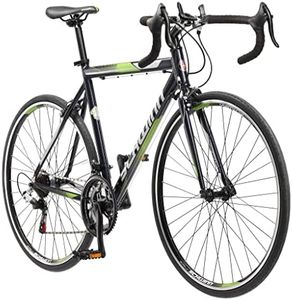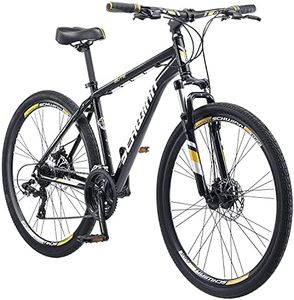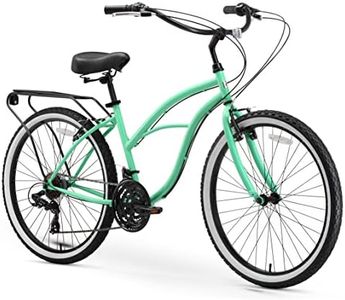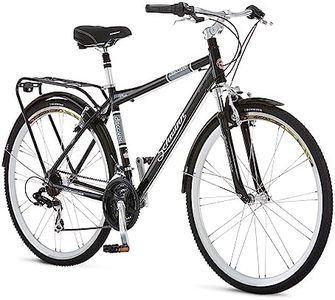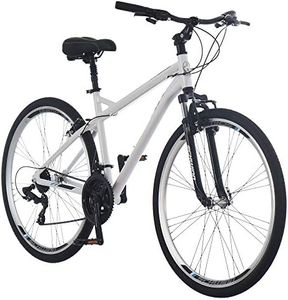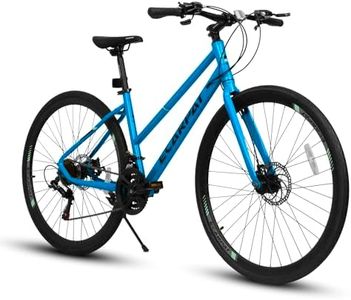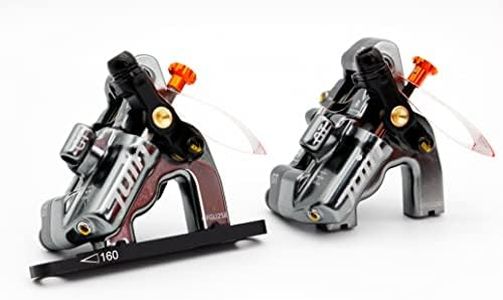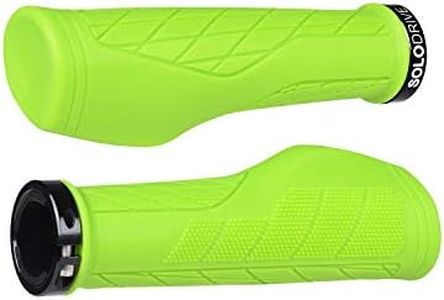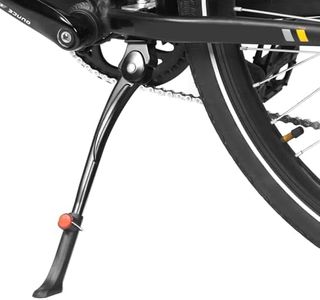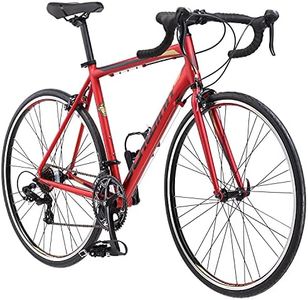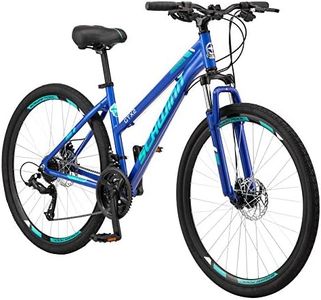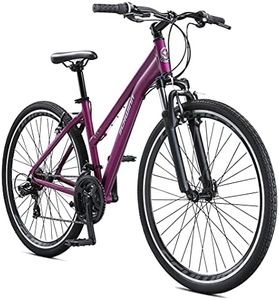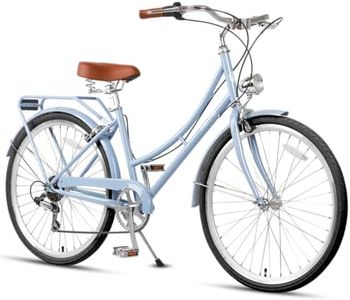We Use CookiesWe use cookies to enhance the security, performance,
functionality and for analytical and promotional activities. By continuing to browse this site you
are agreeing to our privacy policy
10 Best Hybrid Bikes
From leading brands and best sellers available on the web.Buying Guide for the Best Hybrid Bikes
Choosing a hybrid bike is all about finding a versatile ride that fits your lifestyle, comfort needs, and where you plan to cycle. Hybrid bikes combine features of road and mountain bikes, giving you a machine that's ready for city commutes, casual weekend rides, and some light trails. To get the best one for you, it's important to understand the main features and how they impact the feel and performance of your bike. Being aware of these key specs will let you confidently pick a bike that matches how, where, and why you ride.Frame MaterialThe frame material describes what the main part of the bike is made from, which changes the weight, strength, comfort, and cost of your bike. Most common materials are aluminum, steel, and carbon fiber. Aluminum is light and strong, great for most people because it’s easy to handle and rust resistant. Steel is heavier but gives a smooth ride and is super tough, which is nice for comfort or carrying loads. Carbon fiber makes for the lightest, smoothest, and most expensive bikes, often preferred by performance-focused riders. If you’ll be carrying your bike upstairs or want an easier ride, go for lighter materials—otherwise, choose based on how durable or comfortable you want your ride to be.
Wheel SizeHybrid bikes usually come with either 700c or 26-inch wheels. 700c wheels are larger, letting you ride faster and more smoothly over long city roads. 26-inch wheels are slightly smaller, making the bike easier to maneuver and better for mixed or bumpy terrain. If you’re more focused on commuting or paved surfaces, choose 700c; if you want more control or plan to mix in trails, a 26-inch wheel could be better.
GearingGearing refers to the number of speeds or gears a bike has, which helps you manage hills and different riding conditions. More gears mean more options for tackling steep hills and long rides, while fewer gears keep things simple and lighter for flat areas. If your routes include lots of hills or you want more flexibility, look for a bike with more gears. But if you mostly pedal on flat ground, a bike with fewer gears will be easier to use and maintain.
Brake TypeBrakes are your bike's main safety feature, and hybrid bikes commonly use either rim brakes or disc brakes. Rim brakes press on the outer edge of the wheel, and while they're easy to maintain and replace, they don’t work quite as well in wet or muddy conditions. Disc brakes, which grip onto a special disc attached to the wheel, offer stronger, more consistent stopping—especially in all weather. Choose disc brakes if you want the best performance and often ride in rain or off roads, but for dry, casual rides, rim brakes are perfectly fine.
SuspensionSuspension systems absorb bumps in the road and add comfort to your ride. Many hybrid bikes have no suspension to keep them lighter and more efficient, which is best if you mostly stick to smooth streets. Some feature front suspension forks to help smooth out bumps, useful if your routes have rough paths or occasional off-road sections. If comfort on uneven roads is important to you, look for a bike with suspension at the front, otherwise, a rigid (no suspension) bike will be simpler, lighter, and more efficient.
Handlebar ShapeThe shape of the handlebar changes your riding posture and comfort. Most hybrids have flat handlebars, giving you a more upright position that feels natural and is easy on your back and neck—great for city and casual rides. Some use riser bars for even more comfort, or slightly curved bars for varied hand positions. If you value comfort and better visibility in traffic, flat or riser bars are your best choice.
Tire WidthTire width affects grip, comfort, and how fast you can go. Wider tires (35-45mm or more) make the ride smoother and offer better control on rough or loose surfaces, while thinner tires (28-32mm) make the bike faster and easier to pedal on smooth roads. If you often ride on mixed or bumpy routes, wider tires will keep your ride comfortable and stable. For mostly paved and smooth surfaces, opt for narrower tires for speed and efficiency.
Fit and SizingGetting the right fit is essential for comfort and performance. Bikes come in different sizes to match different heights and body types. The right size means you’ll be able to reach the pedals and handlebars comfortably without stretching or feeling cramped. Check the manufacturer’s size guide and, if possible, test ride or measure your inseam to find a frame that matches your proportions. A well-fitted bike makes every ride more enjoyable and reduces the risk of aches or injury.
